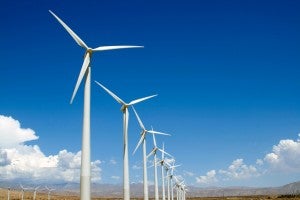Cap and Trade under AB 32 – Now it’s an “Official Success”
(This blog post was co-authored with Tim O’Connor and originally posted on California Dream 2.0.)
 Many people have been following the AB 32 cap-and-trade program since it kicked off on January 1, 2013. After all, it’s the most comprehensive carbon market in the world; it has created billions in investments for pollution reduction in California communities and garnered intense international attention. Now, based on data showing the program has cut climate pollution during its first compliance period, the chair of the California Air Resources Board (CARB) has dubbed it “officially a success.”
Many people have been following the AB 32 cap-and-trade program since it kicked off on January 1, 2013. After all, it’s the most comprehensive carbon market in the world; it has created billions in investments for pollution reduction in California communities and garnered intense international attention. Now, based on data showing the program has cut climate pollution during its first compliance period, the chair of the California Air Resources Board (CARB) has dubbed it “officially a success.”
Under California’s Mandatory Greenhouse Gas Reporting program, the largest polluters in the state across all sectors must report their emissions every year. This data is then collected and counted by CARB. Yesterday, the agency released the final tally of the 2014 greenhouse gas (GHG) emissions covered by cap-and-trade, and with data, we get the final word on what happened during the program’s first compliance period (for years 2013 and 2014).
Covered emissions went down…
According to CARB’s report, although GHGs in 2014 experienced a slight increase compared to the year before, total climate pollution across the compliance period (2013 and 2014) decreased by over three percent to approximately 146 million metric tons (MMt) of carbon dioxide-equivalent. This means California’s emissions were nine percent under its 2014 cap of 159.7 MMt, putting the state well on its way to achieve its short-term emissions reduction target: bringing emissions back to 1990 levels by 2020. It also shows how cap-and-trade is best evaluated across compliance periods: since businesses have the incentive to cut pollution as quickly and deeply as possible, reductions in one year of the program may outpace those in another year.
… While California’s economy continued to prosper
Total emissions reported under the Mandatory Greenhouse Gas Reporting program, including those not covered under cap and trade, also decreased between 2012 and 2014, by about 1.3 percent. Meanwhile, the state’s gross domestic product (GDP) increased by almost three percent in 2014, surpassing the two percent GDP growth California’s economy underwent the year before. So while emissions were declining under AB32, the state’s economy grew, proving once again that economic output and emissions don’t necessarily go hand in hand.
California also experienced remarkable job growth during the same period. In 2013, California saw total employment increase by 2.1 percent, beating the national average. In 2014, job growth in the state reached an impressive 3.2 percent. As a comparison, the rest of the United States experienced only an average 2.2 percent growth in jobs that year.
Companies are complying with cap and trade
Under California’s cap-and-trade program, regulated polluters are also required to surrender some of their emissions allowances every year. Yesterday, they did just that, turning in allowances needed to cover the remainder of 2013 emissions and all of 2014 emissions. Total allowances for the first compliance period represent approximately 290 MMt of carbon dioxide-equivalent.
According to data released by the agency, over 99 percent of the required allowances were surrendered in the first compliance period, barely short of a perfect score, proving companies are prepared to incorporate cap-and-trade obligations in their everyday business practices.
Looking ahead
Starting on January 1 of this year, transportation sector emissions are also regulated under California’s cap-and-trade program. This is another important step forward: emissions from transportation represent almost 40 percent of the state’s GHG emissions. It is also a crucial building block, putting California on the right track to achieve its ambitious medium and long-term targets – with the ultimate goal of reducing emissions 80 percent below 1990 levels by 2050.
Today’s results confirm that the cap-and-trade program’s first compliance period was a success and that California has a strong foundation to build upon as it takes the next critical steps towards its climate change goals.











